#Leatherstocking tales
Explore tagged Tumblr posts
Text
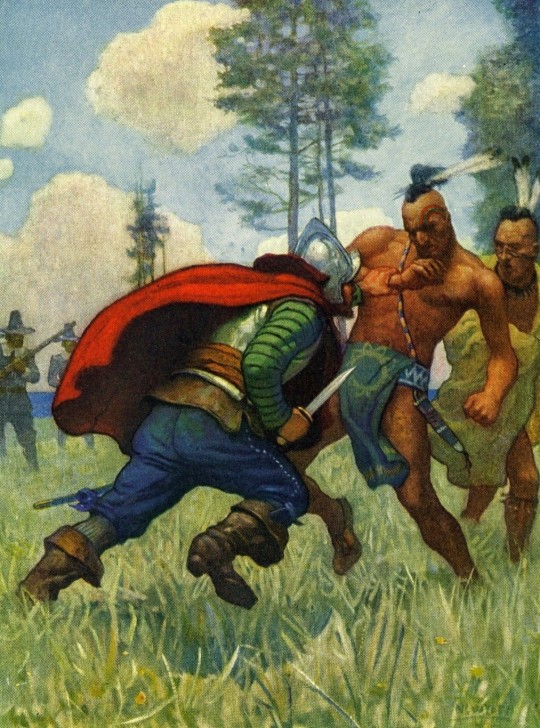
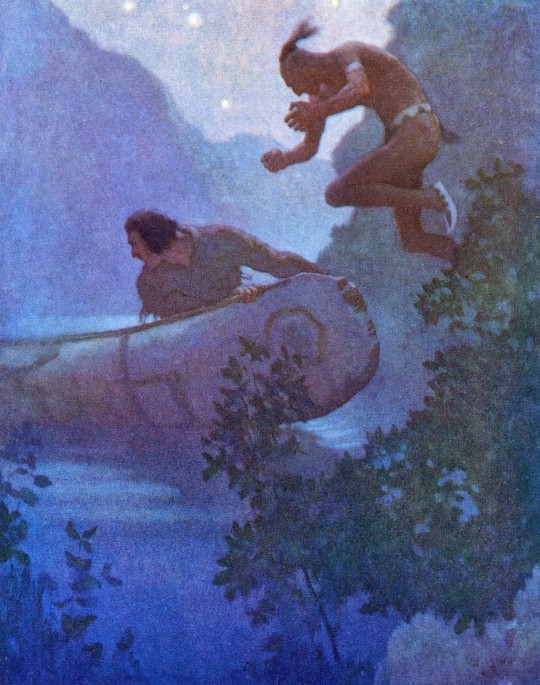
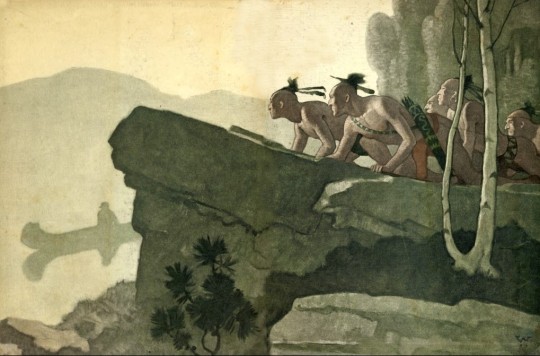
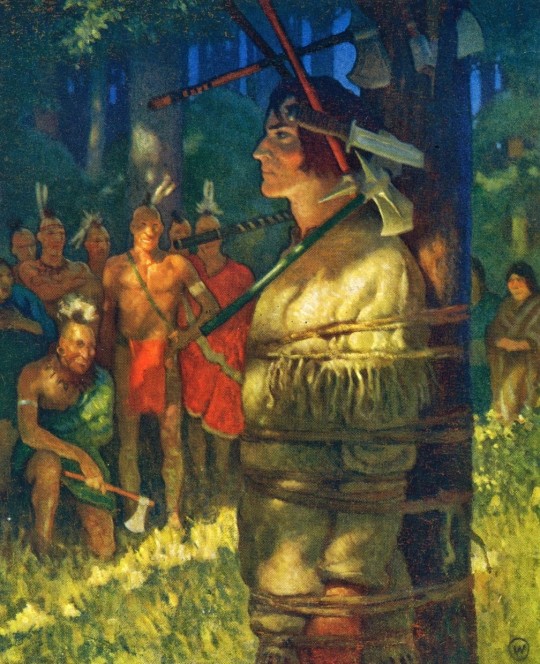
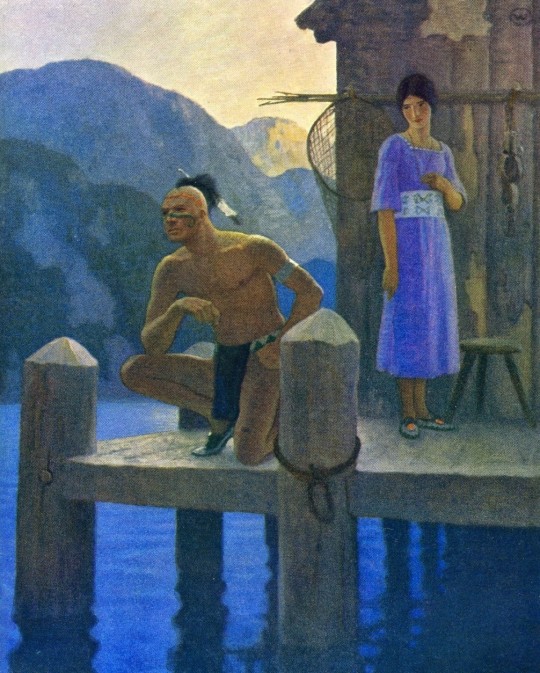
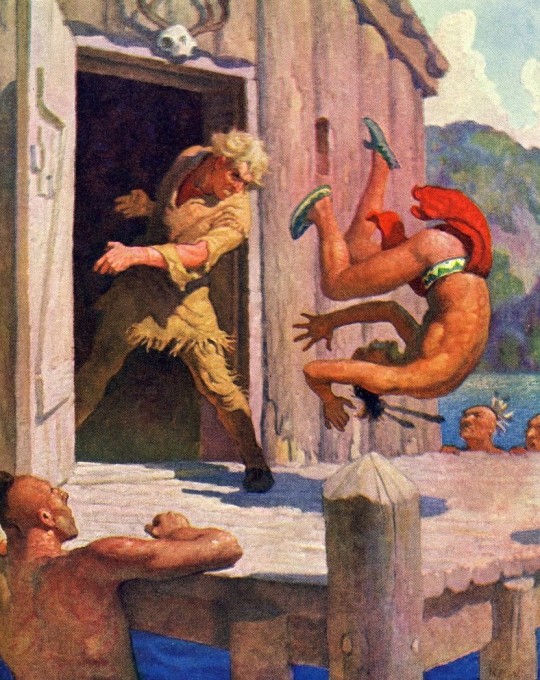
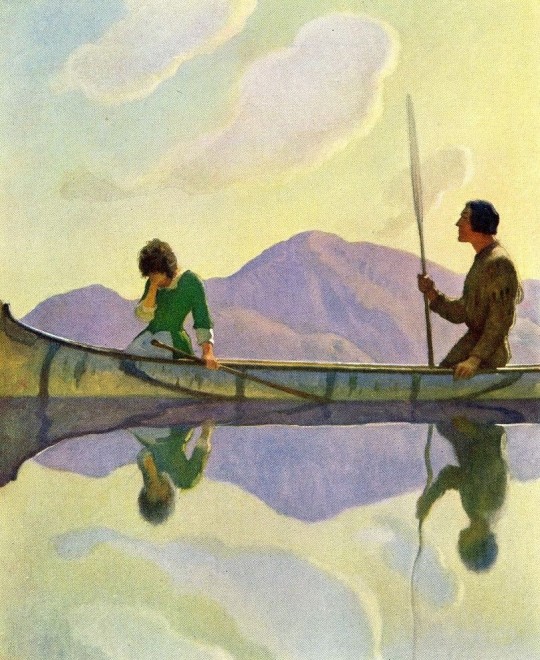
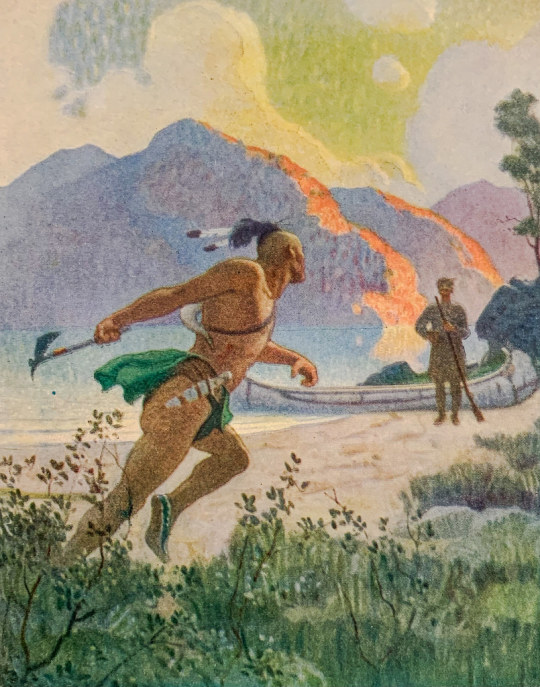
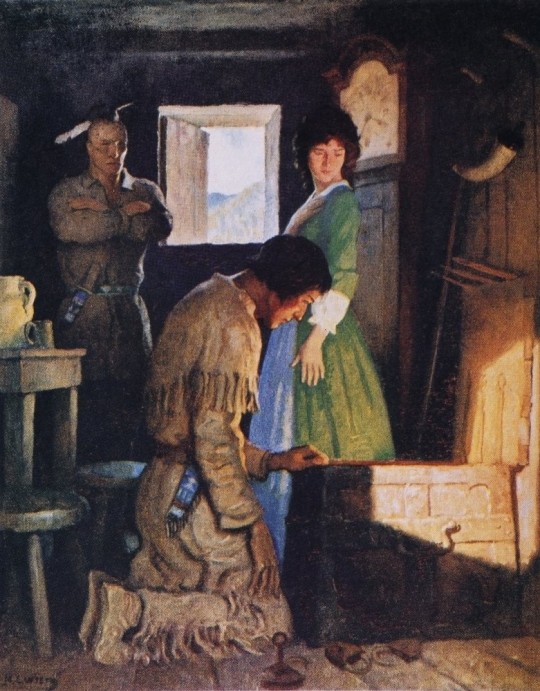
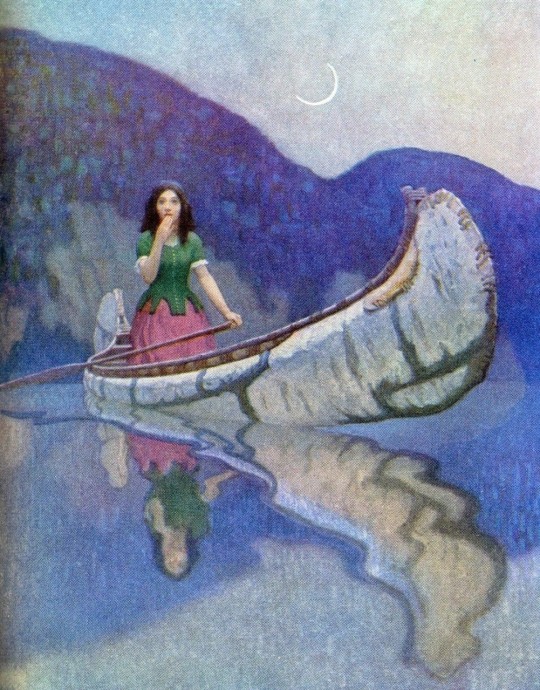
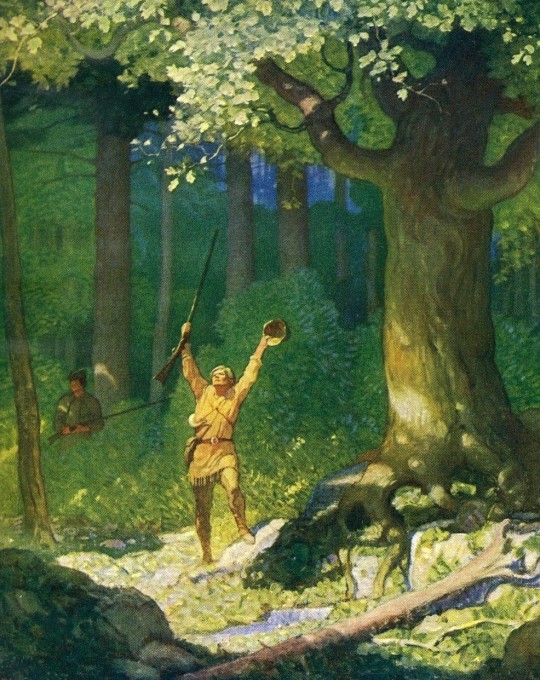
The Deerslayer - art by N. C. Wyeth (1925)
#n. c. wyeth#the deerslayer#james fenimore cooper#book illustrations#adventure novels#leatherstocking tales#nathaniel bumppo#hawkeye#charles scribner's sons publisher#1920s#1925
117 notes
·
View notes
Text
Do American authors still write pages of one unbroken paragraph or was that more a 19th century thing? Either way, I hate it.
#henry james#james fenimore cooper#american authors#american literature#literature#books#leatherstocking tales#the pioneers#reading#booklr
3 notes
·
View notes
Text

I'm just saying, but I feel like the opening page for the Marvel Classic Comics adaptation of "The Last of the Mohicans" looks better than any poster, VHS, DVD or Blu-Ray cover for any screen adaptation. I also love how Chingachgook, who ultimately turns out to be the title character, is the American Indian character who we are drawn to first while his son Uncas, whom we are led to believe is the title character, is basically tucked away in the corner there with Cora. Then you have Hawkeye aka Leatherstocking, the protagonist of the Leatherstocking Tales as a whole, placed behind Chingachgook and that is a nice touch and does a better job than most screen adaptations, especially the 1992 film, whose posters and covers feature the protagonist, but not the title character, while here both title character and protagonist are present.
0 notes
Text
[“A deep psychosis inherent in US settler colonialism is revealed in settler self-indigenization.
The phenomenon is not the same as the practice of “playing Indian,” which historian Philip Deloria brilliantly dissected, from the Boston Tea Party Indians to hobbyists dressing up like Indians to New Age Indians. Settler self-indigenization’s genealogy can be traced to the period of the mid-1820s to 1840s, what historians call the Age of Jacksonian Democracy, marked by, among other phenomenon, the blossoming of US American literature.
The giants of the era are well known to every US high schooler who has had to suffer through American Lit classes—Thoreau, Emerson, Whitman, Longfellow, Hawthorne, and dozens of others. Among them was James Fenimore Cooper (1789–1851), who conjured the United States’ origin story in his Leatherstocking Tales, made up of five novels featuring the hero Natty Bumppo, also called variously, depending on his age, Leatherstocking, Pathfinder, Deer-slayer, Hawkeye. Together the novels narrate the mythical forging of the new country from the 1754–1763 French and Indian War to independence to the settlement of the plains by migrants traveling by wagon train from Tennessee. At the end of the saga, Bumppo dies a very old man on the edge of the Rocky Mountains as he gazes east. But it is The Last of the Mohicans, subtitled A Narrative of 1757, that relates the self-indigenization myth that has endured. The Last of the Mohicans was a best-selling book throughout the nineteenth century and has been in print continuously since, along with a half dozen Hollywood movies, the first in 1911, plus several television series made in the US, Canada, and Britain. The most recent Hollywood production was a blockbuster that appeared in 1992, the Columbus Quincentenary.
Cooper conjured the birth of something new and wondrous, literally, the US American race, a new people born of the merger of the best of both worlds, the Native and the European, not a biological merger but something more ephemeral involving the disappearance of the Indian. Cooper has Chingachgook, the last of the “noble” and “pure” Natives, die off as nature would have it, handing the continent over to Hawkeye, the indigenized settler and Chingachgook’s adopted son. The publication arc of the Leatherstocking Tales parallels the Jackson presidency. For those who consumed the books in that period and throughout the nineteenth century—generations of young white men mainly—the novels became perceived fact, not fiction, and the basis for the coalescence of US American settler nationalism, the settler ideology that justified the fiscal-military state.”]
roxanne dunbar-ortiz, from not a nation of immigrants: settler colonialism, white supremacy, and a history of erasure and exclusion, 2021
#roxanne dunbar ortiz#lesbian literature#history stuff#cw genocide#essential for understanding American literature and ESPECIALLY American fantasy literature
127 notes
·
View notes
Text

THE LEATHERSTOCKING TALES by James Fenimore Cooper (London: Routledge, c.1892). 5 black & white illustrations.
THE DEERSLAYER, THE LAST OF THE MOHICANS, THE PATHFINDER, THE PIONEERS, and THE PRAIRIE.
#beautiful books#book blog#books books books#book cover#books#illustrated book#vintage books#james fenimore cooper#last of the mohicans
11 notes
·
View notes
Text
i love the leatherstocking tales, have since i read them at 11, and i havent read them in years. started the audiobook for deerslayer and uhhhhh. well. so far its been an hour of "well this is so beautiful, it proves theres a god" "yeah well [racism]" "hold on now, god made everybody the way he made them and also morality is defined by your culture" "[racism] [lust]" "okay but have you considered that theres good and bad people everywhere and saying any specific race is bad or stupid is equivilent to spitting in gods face" "[atheism]" "look. we're white, which means its traditional to believe in god. the tribes dont believe in god but thats because theyre not white so its okay, its not their tradition. but you and i are white so we're gonna believe in god and fucking well like it"
#leo.txt#god. its sooooo#natty bumpo is so fun though#hes like yeah ive never killed a man. im not an asshole<3 and his buddy goes well IM not an asshole and i like killing people. i do it all#the time. sooooooo
1 note
·
View note
Text
James Fenimore Cooper (September 15, 1789 – September 14, 1851) was a prolific and popular American writer of the early 19th century. He is best remembered as a novelist who wrote numerous sea-stories and the historical novels known as the Leatherstocking Tales, featuring frontiersman Natty Bumppo. Among his most famous works is the Romantic novel The Last of the Mohicans, often regarded as his masterpiece.
I Write Like
0 notes
Text
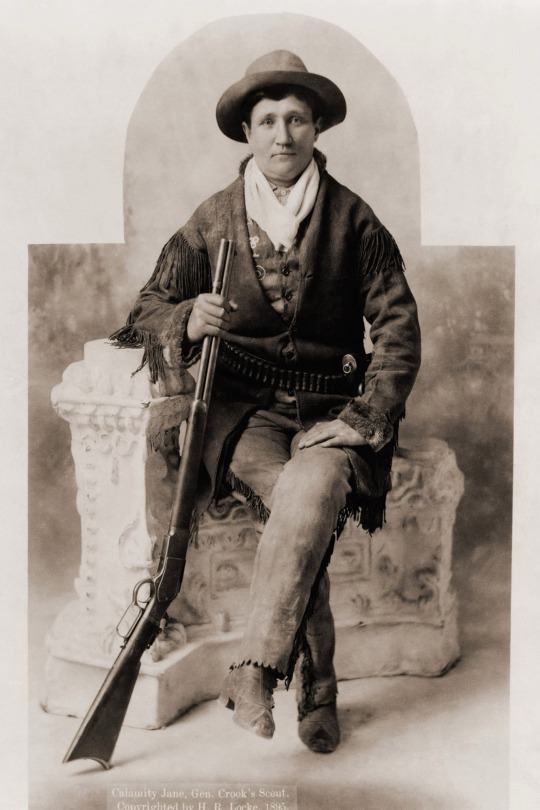
Calamity Jane — Born Martha Jane Canary — Is a Legend of the American West. But was she a gunslinger? An Army scout? A rider for the Pony Express? After a century of half-truths and fabrications, historians are still struggling to separate fact from fiction in her life story. Photograph By Everett Collection, Bridgeman Images
Who Was The Real Calamity Jane? Historians Search For An Answer.
Her exploits became the stuff of legend, glamorizing life in the Old West. But Martha Jane Canary’s real life story bears little resemblance to the fictional heroine.
— By Heather Mundt | March 12, 2024
You would be forgiven in describing Calamity Jane as an iconoclast whose flouting of 19th-century female mores launched her into exceptional fame and fortune in a male-dominated American West.
It’s true the woman behind the fictional heroine—born Martha Jane Canary—was a buckskin-clad, gun-slinging, foulmouthed cowgirl whose affinity for alcohol was legendary, even among men. But that’s where facts diverge significantly from fiction.
Historians have spent decades trying to find her—methodically unraveling a century of mistruths, half-truths, and full-blown fabrication, many of them introduced by Calamity herself. She was also illiterate, leaving no letters or journals for analysis, not even a signature. So who was the real Calamity Jane?
The Creation of a Myth
“People, largely, are still in love with a romantic Old West," says Richard W. Etulain, former director of the Center for the American West at the University of New Mexico who’s written two comprehensive books on Martha Jane Canary.
It's been part of the country’s literary tradition from its inception around the early 19th century, he says. James Fenimore Cooper created the early framework for the Western as a genre in his groundbreaking Leatherstocking Tales, a five-novel frontier series that includes his famous 1826 novel The Last of the Mohicans.
These were masculine stories featuring females as love interests, providing a formula for the early paperbacks called dime novels. Emerging around the start of the Civil War, the cheaply printed books sold on newsstands for no more than a dime.
With simple plots placing a hero or heroine in a dilemma, they were the perfect vehicle to spread myths about the real-life personalities of the American West—including Calamity Jane.
A Calamitous Early Life
Born around May 1, 1856, near Princeton, Missouri, Martha Jane Canary was the oldest of three children. Around 1863, the family sold their farm and headed west toward Montana, ostensibly drawn by the booming mining towns.
She told of the five-month overland journey in her autobiography, Life and Adventures of Calamity Jane, a rare kernel of truth in what’s considered an exaggerated work of semifiction.
“I was at all times with the men when there was excitement and adventures to be had,” she said. “By the time we reached Virginia City, I was considered a remarkable good shot and a fearless rider for a girl of my age.”
The Trek Ended in Heartache.
Both of her parents died within four years of the move and, by 1867, her siblings were allegedly sent to live with Mormon families in Utah. Not yet a teenager, Etulain writes in The Life and Legends of Calamity Jane that she was adrift in a pioneer man’s world.
Calamity Jane lived a nomadic life, taking jobs for a few weeks at a time before heading to the next spot whim took her. And that’s where her story begins to blend into myth.
Dime Novel Fame
By the time she’d reached age 20, Martha Canary was already well known in the “rough and ready settlements of the western plains for dressing in men’s clothes, a taste for liquor and wanderlust, and a tendency to shoot off her mouth and her guns,” writes historian Karen R. Jones in The Many Lives of Calamity.
Tthe genesis of her nickname is unclear. What is clear is that she was already known as Calamity Jane in the summer of 1876 when she sauntered down the dusty main street of Deadwood, South Dakota, on horseback in a suit of buckskin alongside Wild Bill Hickok.

Calamity Jane gained fame in the 1870s after arriving on horseback in Deadwood, South Dakota, alongside Wild Bill Hickok. The two were likely mere acquaintances but dime novels and sensational newspaper stories published many a tall tale of their dubious exploits together. Photograph By Everett Collection, Bridgeman Images
She was traveling with the most famous gunman and lawman of the West, Etulain writes, having joined his wagon train of gold seekers as it headed north toward the Black Hills.
“Calamity Jane has arrived!” local newspapers proclaimed. From that moment, her name would be intertwined with Wild Bill’s in Old West lore. The news stories that followed, embellished and sensationalized in the era of yellow journalism, flung her into stratospheric fame.
She would be forevermore the wild woman of the West, often cast in dime novels as the love interest of notorious gunslinger Wild Bill. She was also often linked with another famous Bill—Buffalo Bill Cody, whose prowess in slaughtering buffalo had become dime novel legend. Stories abounded of her performances in his famous stage show, Buffalo Bill’s Wild West.
In her semifictional 1896 autobiography Life and Adventures of Calamity, Calamity also described herself as a rowdy plainswoman who rode for the Pony Express and served as General Custer’s scout.
For more than a century that followed, the depictions of Calamity Jane in media would make it even more difficult to unravel the truths of her life. In Cecil B. DeMille’s 1936 movie The Plainsman, she was a rip-roaring cowgirl who fought Native Americans alongside Buffalo Bill Cody and Wild Bill. Some 70 years after that she was portrayed as the bawdy friend of Wild Bill and town drunk in HBO’s Western series, Deadwood.
The Real Calamity Jane
Many of the tall tales surrounding Calamity’s life are rooted in fact.
She may have served as an Army scout, her biographers found—just not for General Custer. Calamity did know Wild Bill, but not as his romantic partner. In fact, they would have been little more than acquaintances. (Hickok was assassinated at a poker game shortly after the group’s arrival in Deadwood.)
Calamity Jane was also cast in traveling shows but not Buffalo Bill’s Wild West production, says Jeremy M. Johnston, the Tate endowed chair of Western history at the Buffalo Bill Center of the West in Cody, Wyoming, which houses what’s believed is her only remaining buckskin suit.
She was legally married once in 1888 but did shack up with several men whom she called "husband” along the way. She also gave birth twice: first in 1882 to a son, who died shortly after his birth, and in 1887 to daughter, Jessie Elizabeth. (However, whatever happened to her daughter remains debatable.)
Tales recounting Calamity’s nursing skills are also well-documented. “She really took care of anyone who was sick,” Johnson says. “Anyone who needed anything, she would step up and help them through their troubled times.”
Johnston’s own grandmother used to tell the story of Calamity Jane helping their family recover from an illness. To thank her, his great-great grandmother made Calamity a nice shirt. A few days later, however, onlookers found her in the streets intoxicated with the shirt covered in mud.
The Death of Calamity Jane
In fact, alcoholism was constant refrain throughout her life, McLaird writes, perpetuating her lifelong poverty. “Sadly, after romantic adventures are removed, her story is mostly an account of uneventful daily life interrupted by drinking binges,” he writes.
For the last seven-plus years of her life, Etulain writes in Life and Legends, she earned money as a performer and roaming saleswoman, peddling her autobiography and photos.
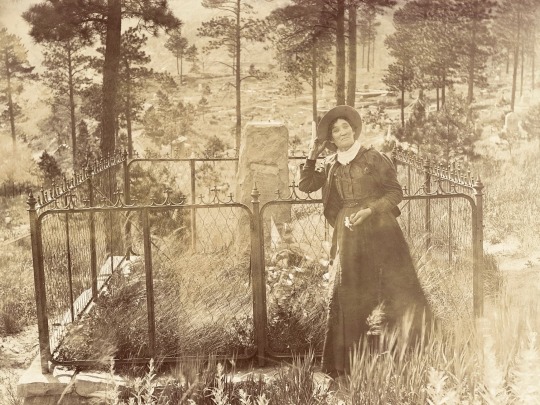
Calamity Jane poses at the grave of Wild Bill Hickok in Deadwood, South Dakota, in this photograph taken by J.A. Kumpf circa 1903. The famous gunslinger died that year and was buried in the same cemetery. Photograph By Graphicaartis, Bridgeman Images
She died penniless at age 47 on August 1, 1903, likely from effects of alcoholism. She’s buried near Wild Bill in the Mount Moriah Cemetery in Deadwood—and the misinformation that pervaded her life has followed in her death, Etulain writes, as even her tombstone displays an incorrect name, birthdate, and age.
But though her real life may have been more tragedy than adventure, Etulain argues that she remains an illuminating example of grit and determination.
“The loss of her parents before her teen years, the lack of education, and the downward push on many frontier women in the late nineteenth century—Calamity rose above these challenges as a young woman of energy, endurance, and fortitude.”
#History#Historians#Search | Answer#The Real Calamity Jane#Myth Creation#Early Life#The Death | Calamity Jane#Old West#Cowboys#Legends#Mythology#Women#History & Culture
1 note
·
View note
Photo

Even the Russians loved Hawkeye
Responding to my recent blog about James Fenimore Cooper’s “Leatherstocking Tales,” my daughter-in-law Sacha sent me a photo of these postage stamps that depict, in meticulous detail and vivid colors, scenes from the Tales.
Funny thing is, they’re not U.S. stamps; they’re from Soviet Russia. It seems that in 1989, in its final days, the Soviet Union produced a set of stamps reflecting the popularity of the Tales among the Russian population.
So, why would the Communist USSR promote literature that honors the fictitious Natty Bumppo (also known as Hawkeye and Deerslayer), a paragon of rugged individualism?
An article that accompanied the photo of the stamps suggests that Soviet leaders approved the books because, in their mind, they portrayed Americans as ruthless oppressors of the Natives.
But, instead, Russian readers loved them for their wilderness drama and adventure.
7 notes
·
View notes
Photo


Another pic from another satisfied customer. When he contacted me about hanging his antique flintlock rifle, I was happy to help. I have a soft spot in my heart for flintlock rifles.
The double screw holes in the hooks prevents any chance of spinning and magnifies the “hand forged” nature of the hooks. I even lined the hooks with leather so we wouldn’t worry about scratching that fine wood.
The pictures remind me of my favorite poem -- A Rifle in Green Baize by Henry Lawson.
#smokepole#thunderstick#flintlock#blacksmith#threeriversforge#blacksmithing#boomstick#henry lawson#leatherstocking tales#jamesfenimorecooper#rifle rack#shooting#black powder#metalworking#wroughtiron#nosmallcreator#handforged#wall hooks#longrifles#happycustomer
34 notes
·
View notes
Photo

Silverlock (1949)
Silverlock is a novel by John Myers Myers published in 1949. The novel's settings and characters, aside from the protagonist, are all drawn from history, mythology, and other works of literature.
Plot summary While on a sea voyage, a ship named Naglfar founders. One anhedonic passenger, A. Clarence Shandon (M.B.A., Wisconsin), is washed ashore in a fictional land known as "The Commonwealth of Letters". He is befriended by Golias, who nicknames him "Silverlock" and who becomes his guide. Silverlock and Golias encounter figures from history, literature and mythology.
Characters This is a partial listing of the characters, settings, and events that are drawn from history, and from works of literature and mythology. Some of the characters go by names other than those given below, thus the reader is expected to identify them from their contexts.
* Golias. His name is that of a mythical patron saint of wandering bards.[1] He is also identified as Orpheus, Taliesin, Amergin, Virgil, and other wandering poets. * Lucius Gil Jones, a composite of Lucius in The Golden Ass by Apuleius, Gil Blas in Gil Blas by Alain-René Lesage, and Tom Jones in The History of Tom Jones, a Foundling by Henry Fielding * Robin Hood, legendary figure * Job, character from the Bible * Faust, from Goethe's play * Pathfinder from The Last of the Mohicans * Don Quixote and his squire, Sancho Panza * Daniel Boone, American explorer * Puck, character from Shakespeare's A Midsummer Night's Dream * Beowulf, mythical hero * Manon Lescaut, from the novel L'Histoire du chevalier des Grieux et de Manon Lescaut and the opera Manon Lescaut. * Becky Sharp (Becky Crawley) from Thackeray's Vanity Fair * Emma Watson, from the novel fragment The Watsons, by Jane Austen * Izaak Walton, English novelist, as "Piscator" * The Mad Hatter, The March Hare, and The Dormouse from Alice in Wonderland * The Green Knight from Sir Gawain and the Green Knight * Ship of fools, a medieval European cultural phenomenon * Hamlet, from Shakespeare's play of the same name * Oedipus, the mythological Greek hero * Brian Boru, High King of Ireland
Source: Wikipedia
(image via Black Gate)
#books#Arthurian legend#Alice In Wonderland#Robin Hood#Leatherstocking Tales#Hamlet#A Midsummer Night's Dream#fiction as reality
1 note
·
View note
Photo



Rest in peace, James Fenimore Cooper.
Stamp details: Top left: Issued on: January 29, 1940 From: Cooperstown, NY SC #860
Top right: Issued on: August 19, 1989 From: Moscow, USSR MC #5983
Stamps on bottom: Issued on: November 17, 1989 From: Moscow, USSR MC #6009-6013
#james fenimore cooper#usps#ussr#cccp#Leatherstocking Tales#natty bumppo#La Longue Carabine#hawkeye#the pathfinder#last of the mohicans#stamps#philately#writers#authors#19th century literature#french and indian war#the deerslayer#Chingachgook#Uncas#dan'l bonner#sara donati
2 notes
·
View notes
Text
The Last of the Mohicans
James Fenimore Cooper

The wild rush of action in this classic frontier adventure story has made The Last of the Mohicans the most popular of James Fenimore Cooper’s Leatherstocking Tales. Deep in the forests of upper New York State, the brave woodsman Hawkeye (Natty Bumppo) and his loyal Mohican friends Chingachgook and Uncas become embroiled in the bloody battles of the French and Indian War. The abduction of the beautiful Munro sisters by hostile savages, the treachery of the renegade brave Magua, the ambush of innocent settlers, and the thrilling events that lead to the final tragic confrontation between rival war parties create an unforgettable, spine-tingling picture of life on the frontier. And as the idyllic wilderness gives way to the forces of civilization, the novel presents a moving portrayal of a vanishing race and the end of its way of life in the great American forests.
8 notes
·
View notes
Text
i’m natty fucking bumppo
to follow up on yikes, when I went out to walk to work I picked up the rat corpse I had hurriedly thrown out the door, wrapped it nicely in paper towels, and consigned it to the bin, because I don’t really have anywhere else to put a dead rat with the ground frozen as it is.
It snowed last night/this morning, just a little, about a half-inch of fluffy snow, maybe an inch. And so there was a fresh canvas for tracks, and I noticed the little rat paw prints going under the car, which is clearly where Chita apprehended it. (She likes to hang out there too, it’s her Spot, and thus a really terrible place for that rat to have chosen to go.) (And, I noted, she did not break its neck, but rather bit straight through its chest, so like. Yikes.)
I looked around, and saw that the rat had approached across the yard, from next to our garbage can back by the garage. I took a photo of what the prints looked like, for my own reference. On the driveway, in shallow snow, the feet moved individually, but to get through the deeper snow in the yard, the rat had hopped, feet together, and its tail had made a distinct drag print.
photos behind cut

deep snow

shallow snow, my footprints for scale
I walked down the street a little ways and noticed those same prints in the neighbor’s yard. The rat had come from the street, gone through her yard to the back, and then looped around my yard from the back, hiding by my garbage cans, and then hopped across my yard to the driveway, where Chita killed it.
So the rat was just passing through. I didn’t see any further prints; it seems like the rat may have come from the school across the road?? Interesting how far it traveled.
And a last photo, please don’t look if you don’t want to see dead things, but here it is, and I’m sorry, I like pet rats too but this clearly isn’t one.

Clearly that is Not A Mouse!
______
(i texted the title of this post to dude as i was wandering around the neighborhood looking for rat tracks, and he was like “who” so I decided to look Natty Bummpo up, and did u kno, according to Wikipedia, one of his aliases was Hawkeye, and yes for real, that’s where the Marvel character got his name, after having portrayed the Bummpo character in a carnival show in his youth. *~ the more you know ~*)
0 notes
Photo








New from Library of America, Two Novels of the American Revolution, by James Fenimore Cooper. This volume features the all but forgotten novels, The Spy: A Tale of The Neutral Ground, and Lionel Lincoln; or, The Leaguer of Boston, by the author of The Leatherstocking Tales.
#books#james fenimore cooper#the leatherstocking tales#two novels of the american revolution#novelists#classics#fiction#library of america#american literature#american revolution#new books#new releases
6 notes
·
View notes
